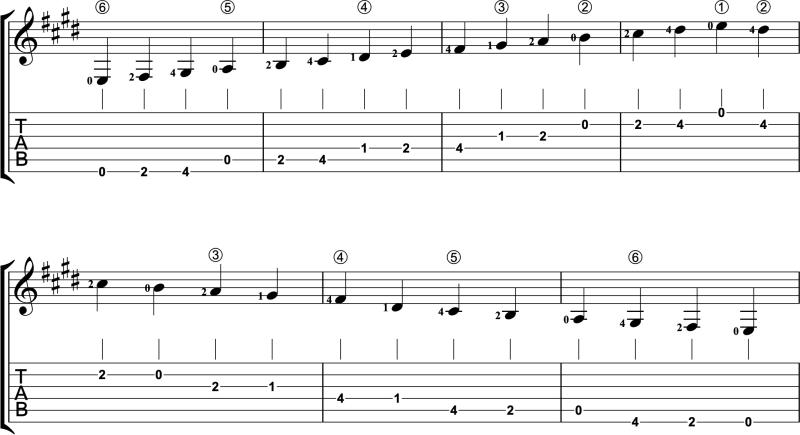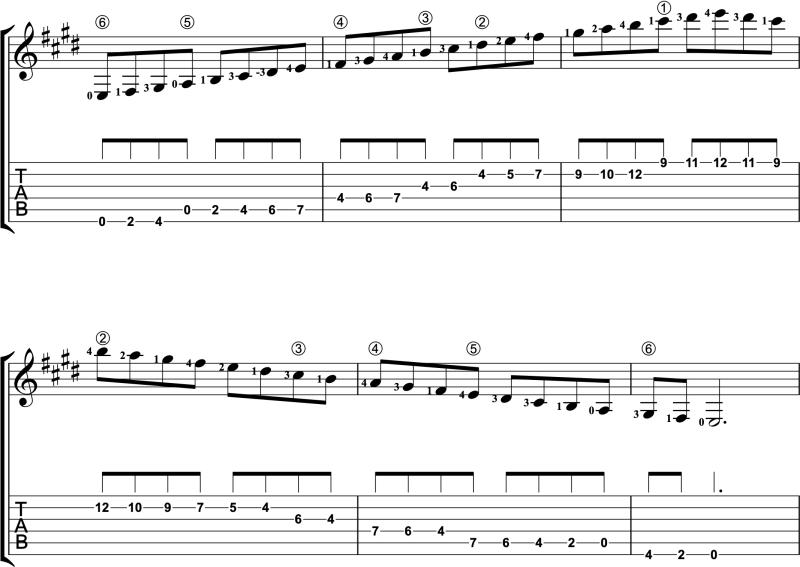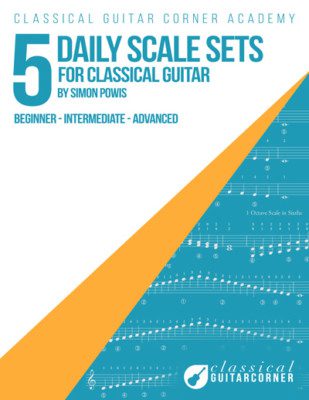Learn to Play an E Major Scale on Guitar
In this article we’ll walk you through how to play an E Major scale on guitar.
E Major Guitar Scale Notes
The notes of the E Major guitar scale are the following:
E-F#-G#-A-B-C#-D#-E
Key Signature
E Major has four sharps. This can be a lot to keep track of. And without a key signature all these sharps clutter up the page. The key signature helps to remind us which notes are accidentals and which are natural. Plus it just looks much cleaner on the staff.
E Major Scale One Octave
Because of all of the sharps in E Major, we have quite a few big stretches, even for our first-position, one-octave scale. If you’re finding these stretches difficult, you can try exactly the same fingerings using a capo in a higher position.
First Position

Fourth Position
There are many places across the fretboard where we can play a two-octave E Major scale. However, this fourth-position scale is really comfortable and so is a great place to start if you’re wanting to remove some of the open strings from our first-position scale. Learn more about playing in positions.

E Major Scale Two Octaves
Because the lowest and highest strings of the guitar are both E’s, it’s easy to play a two-octave scale in first position. It does still require some stretches (especially between 2 and 4 and 4 and 1), but once you conquer those, this is a simple scale.

E Major Scale Three Octaves
Finally, the three octave scale has many different possibilities. The differences all lie with where we might shift. We can shift on the fifth string and second string (like we do here) or we might choose to include fewer shifts. There are so many different ways to play this scale. This one is really approachable because it only has two shifts on the way up and allow us to use the more comfortable 0-1-3 fingering on the lower strings to start.

E Major Scale in Classical Guitar Repertoire
While we have to wrestle with four sharps, E Major is still a very guitar friendly key because of how many open strings work in this key (four!). We can play E on the low sixth string, A on the fifth, open B on the second, and high E on the first string. All of these work with the principal harmonies in this key.
Here are some great examples of E Major in the classical guitar repertoire.
Lágrima by Francisco Tárrega, 1st section
The Black Cockatoo…Flying Alone by Richard Charlton, 2nd section
Sonata K.380 by Domenico Scarlatti, guitarist Ana Vidovic
***
We hope you’ve enjoyed learning the E Major scale! Want to learn more scales?
- Check out our Scales Resources page.
- Get started with how to play a C Major scale on guitar.
- Download a FREE Scales Book –>


Leave A Comment